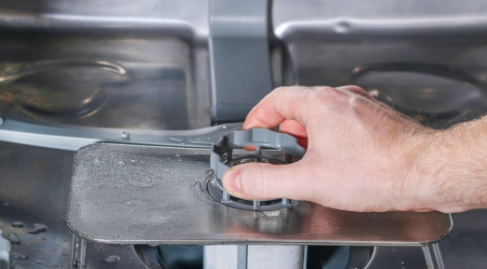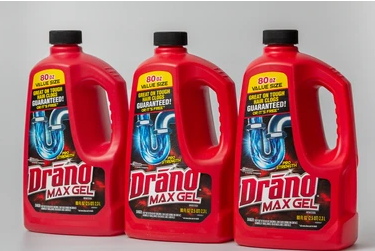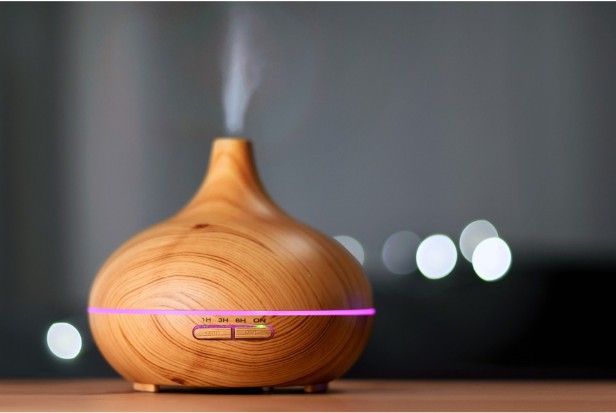Can Drano be used to clear clogs in a dishwasher? Is Drano a suitable remedy for a clogged dishwasher, which can result in flooding and dirty dishes and be a frustrating experience to deal with?
Having to purchase a different piece of equipment for each job can be a hassle. A good way to reduce costs and resources is to recycle and use items for multiple purposes.
However, not all substitutions or hacks prove to be useful, so you must exercise caution.
For instance, you shouldn’t use Drano if your dishwasher is clogged.
Drano cannot be used to clean or unclog a dishwasher because the chemical reaction that would occur would be disastrous for both your dishes and the dishwasher itself.
So please don’t put Drano in the dishwasher!
To stay in working order, a dishwasher requires intensive maintenance.
Your dishwasher would be left unusable with just a few minor mistakes.
Fortunately, this guide has all the information you need to know about Drano and dishwashers, so you don’t have to worry anymore. Let’s get right to it.
Table of Contents
Can You Put Drano in a Dishwasher to Unclog It?
A well-liked product called Drano can clear the plumbing and drains in your home of accumulated debris. However, not all drain-equipped appliances, particularly those made of plastic, are intended for use with it.
Considering that Drano has a number of poisonous components that can melt plastic and leave poisonous residues, this is true. But in order to comprehend why it’s dangerous to use Drano in a dishwasher, we need to look more closely at these components and their impacts on dishwashing equipment.
Drano Ingredients
Drano products come in a variety of forms. These include pourable liquids and foaming gels. However, a similar set of ingredients can be found in almost all Drano products. Some of the most prevalent of these ingredients include:
- Bleach
- Sodium hydroxide
- Aluminum
Now, using bleach in your dishwasher isn’t necessarily a bad idea. After all, bleach can be a secure way to clean and disinfect your larger appliances when combined with water.
However, you must make sure that you’re combining equal parts of each ingredient (for example, 50% water and 50% bleach) or diluting bleach with more water. That’s because bleach that hasn’t been diluted is potent enough to remove paint from walls.
Therefore, bleach has the potential to harm the internal parts of your dishwasher. Additionally, chlorine gas, which can be toxic if inhaled, is released by undiluted bleach. Nevertheless, sodium hydroxide, also known as lye, is most likely the most hazardous component in Drano products.
If inhaled, this acidic substance has the potential to damage the lungs and can burn severely when touched. The fact that sodium hydroxide is strong enough to dissolve almost any organic material, including skin, is even more worrisome.
While this effect can help remove clumped grease and fat from your drains, when combined with aluminum, it can also become extremely harmful. Notably, Drano contains minute aluminum flakes.
As a result, pouring Drano down your drains results in a reaction that produces heat. This chemical mixture can produce heat that is hot enough to melt plastic components, dishwasher pumps, and PVC plumbing pipes. This reaction is so powerful that it is even used in explosive creation projects.
How Drano Affects Dishwashers
Imagine that you add a small amount of Drano to the dishwasher’s soap dispenser, shut the door, and start the wash cycle. What is going on inside your dishwasher?
You might not initially notice any changes or troubling problems. But as the Drano solution starts to pass through your appliance, it may start producing a lot of heat. The plastic parts of your dishwasher, such as the drain pump, are susceptible to rapid melting due to this heat.
Your dishwasher won’t be able to pump away water if the drain pump melts, which will cause severe flooding. This pump can be replaced for an average cost of $375, but you’ll probably need to hire a professional repairman to do it.
However, using Drano in a dishwasher causes more than just damage to internal components. The chemicals in this product can easily coat the interior of your appliance.
You might use bleach and lye to clean your dishes. Therefore, Drano affects dishwashers in two notable ways:
- It melts crucial components that keep dishwashers functional
- It leaves toxic chemicals behind that can contribute to accidental poisoning
When you notice a clog in your dishwasher, instead of adding some Drano, consider determining the precise cause of the drainage issues. You can come up with a secure and efficient solution by doing this.
Reasons Why Dishwashers Get Clogged

In the event that your dishwasher isn’t draining properly, you might feel compelled to use Drano in it. But before taking such extreme measures, it’s important to take into account the potential causes of your dishwasher’s draining issues.
Some of the most common reasons why dishwashers get clogged include:
- Not pre-rinsing your dishes before putting them in the dishwasher
- Failing to clean the drain filter that protects the drain hose
- Hard water deposits inside the drainage pipe or hose
- Putting too much liquid soap in the dispenser
- Forgetting to remove the knockout plug in the garbage disposal
- The garbage disposal is broken or clogged
- Faulty household plumbing lines
As you can see, there could be a number of causes for a clogged dishwasher. Finding the right remedy requires determining which of these problems is causing the drainage issues with your appliance.
Go ahead and hand wash your dishwasher’s drain filter with a little dish soap right now if you can’t recall the last time you did so. After this, you might be surprised by how quickly your dishwasher drains.
You may need to call a plumber for assistance if your dishwasher is flooding your kitchen, of course. After all, the typical homeowner will find it much more difficult to repair faulty plumbing.
A Safe Alternative to Drano
By removing the drain hose from the sink or garbage disposal tailpiece, lowering it into a bucket, and using a piece of wire or a similar tool to probe inside the hose to clear any obstructions, most drain hose clogs can usually be removed manually. Chemicals are obviously simpler to use, so if you prefer them, combine vinegar and baking soda.
Remove the filter from the dishwasher, uncover the drain, add 1 cup of baking soda, then 1 cup of vinegar. In addition to deodorizing, the mixture creates a carbon dioxide fizz that safely dissolves grease and other deposits. After about 30 minutes of continued fizzing, pour 2 or 3 cups of hot water down the drain and run the dishwasher’s rinse cycle.
What If the Dishwasher Doesn’t Drain?
It’s likely that your machine is clogged if a cycle is running but no water is coming out.
The dishes that were already there should be removed before doing anything else, but don’t panic.
Your dishes will likely have a soapy residue if the cycle had just started, so you might want to hand-rinse them to remove any remaining soap.
After you have finished with the dishes, go over to the dishwasher and look at the bottom. There is a filter there.
It probably looks dirty and covered in food debris. Remove all the residues by opening it up.
Run a cycle without dishes after replacing the lid. Re-insert the dishes and continue using the machine as usual once you notice the drainage has become smooth.
In order to prevent further obstructions, this procedure should also become ingrained in your routine.
You can also try the garbage disposal, if you have one, if the method described above doesn’t work. Inspect your dishwasher to see if it has that extension.
If you do, cleaning it will probably also solve your dishwasher’s drainage problem. To ensure that the water drains without obstruction, make sure your dishwasher is running while you do this.
Your dishwasher’s blockage can occasionally also be brought on by air gaps.
Check to see if it’s there at the back of your sink, and if it is, start manually cleaning it.
Its cap should be removed, and the dirt should all be broken down by poking it with something pointed.
Once you’re certain that the passage is clear, replace the cap and start your dishwasher’s rinse cycle to check the flow.
So, Can You Put Drano in a Dishwasher?
While putting Drano in a dishwasher is technically possible, we don’t advise it. This is due to the fact that sodium hydroxide, one of the potentially hazardous chemicals used in the production of the de-clogging agent Drano, is used in its production.
These substances can melt plastic and linger for a while inside your dishwasher. Therefore, using Drano in a dishwasher could be detrimental rather than helpful.
Frequently Asked Questions
Can a Dishwasher Get Clogged?
A drain on any device has the potential to clog. Considering that a drain is essentially a tube that removes liquids from a space, this makes sense. Solid objects, grease, or mushy food scraps that enter a drain can quickly congeal into a blockage that prevents liquids from draining out.
Consequently, dishwasher clogs are a possibility. Food residue, solidified cooking oils, and damaged garbage disposals are some of the most typical causes of dishwasher clogs. Another typical offender is failing to maintain a clean drain filter.
The good news is that it usually only takes a few minutes to remove and hand wash this filter. If you want to stay on top of maintenance tasks, make sure to consult the user manual or guide for your appliance. By doing this, you can help prevent clogs in the future and the flooding they frequently cause.
Will Drano Ruin a Dishwasher?
Drano can harm your dishwasher’s internal workings and the plumbing pipes that are connected to it. That’s because Drano shouldn’t be applied to painted metal, rubber, or plastic.
These materials may be eaten through by it, which would result in significant harm and costly repairs.
However, after using Drano in a dishwasher, it might be best to just replace it. This is due to the fact that the caustic and harmful ingredients in this product can linger for weeks or months inside your dishwasher.
Every time you wash your dishes, there’s a chance that you unintentionally use a toxic chemical cocktail, which could result in poisonings and other health problems. To be on the safe side, it is best to never use Drano in a dishwasher.
What Can I Use to Unclog My Dishwasher?
You can safely unclog a dishwasher using a variety of products. For example, Finish Dishwasher Cleaner specifically removes grease and helps to clear dishwasher drain hoses.
Naturally, you have the option of using natural substitutes as well. For instance, using a solution of warm water, vinegar, and baking soda (sodium bicarbonate) may be sufficient to clear clogs and restore the dishwasher to full functionality.
After this vinegar wash, use a lemon juice rinse for an even deeper clean. This additional acidity aids in the killing of harmful bacteria and the removal of any lingering food particles. Your dishwasher will smell like citrus when a little lemon juice is added.
Will Vinegar Unclog a Dishwasher?
In place of chemical-based cleaners, vinegar, a highly acidic liquid, is frequently used as a natural alternative. In addition to being able to cut through grease, vinegar also has the ability to dissolve some drainage clogs when combined with baking soda in a safe chemical reaction.
It may only require performing an occasional empty wash with vinegar to prevent blockages in your dishwasher drainage hose.
However, vinegar might not be sufficient to clear a clogged dishwasher. That’s because there are numerous causes of dishwasher clogs. Your dishwasher’s hose may be able to be cleaned out of leftover food with vinegar.
Therefore, it won’t be able to repair a damaged water line or a broken garbage disposal. If vinegar and gentle drain filter cleaning don’t resolve the issue, be sure to think about hiring a plumber to assist you in identifying the cause of your dishwasher’s drainage issues.



MOST COMMENTED
How to
How to Clean Homedics Humidifier: Detailed Guide
How to
Are Humidifiers Good for Pneumonia? Complete Guide
How to
Can You Put Drano in a Dishwasher? (Facts & Safe Alternative)
How to
How to Turn Subtitles on Or Off on Peacock TV: 2023 Guide
How to
How to Get Rid of Hollow Arrow on iPhone? 2 Simple Ways
How to
How to Mirror iPhone to TV Without WiFi: Complete Guide
Computers, Tablets & Printers
The 5 Best Printers for Cricut in 2022